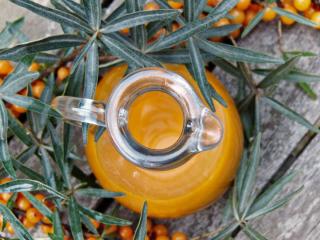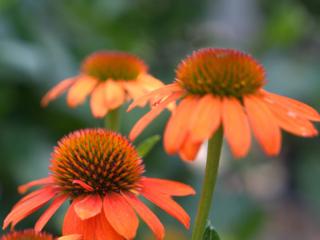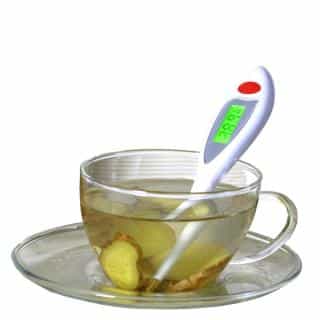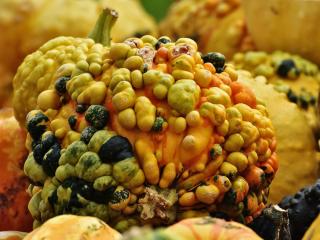A very contagious respiratory infection caused by a virus, flu develops in the throat & nose.
It transfers from one person to the next, through the air: a contaminated person coughs, splutters or sneezes.
This contaminates other persons in the room, even further than 3 feet (1 meter) away.
Quite common, but nonetheless reducing a person to a sorry state, this infectious disease appears brutally in a patient. After 48 hours, the first signs of the flu appear for the newly contaminated person, who starts contaminating other persons after a meager 7 days (for children) or 5 days (for adults).
Every year, this respiratory disease impacts about 3 to 8% of all persons living in temperate climates.
However, when considering the entire planet, flu epidemics lead to 3 to 5 million cases annually, and ultimately between 250,000 and 500,000 persons die to this infection every year.
Luckily, most persons who catch the flu can recover without any problems.
But is it possible to avail of a natural treatment against the flu? Which medicinal plants are the most adapted to treat this? What are their benefits and how can they heal us?
Flu: here is what you need to know…
Also called “influenza”, the flu is an illness caused by a virus that often changes shape on a microscopic level. It attacks the respiratory system.
Generally, this respiratory infection lasts from 3 days up to 1 week, and can truly be incapacitating: the patient often must interrupt his or her daily routine.
Different types of flu, causes and symptoms

Although they share a common pattern, these 3 viruses have different degrees of viral potency.
Indeed, although type A (most dangerous) and type B viruses trigger most annual flu epidemics, only type A viruses are responsible for flu pandemics. However, type C flu viruses trigger a short-lasting and more moderate infection.
The type B virus only infects humans, whereas both type A and type C viruses can impact other species as well.
The main symptoms are something we’re all quite familiar with.
– headaches
– fever (more than 101.5°F or 38.5°C for more than 3 days)
– muscle pain, specifically in the chest area
– shaking…
In most cases, these are quite easy to notice.
To these can be added the following:
– dry cough with throat irritation
– being out of breath while at rest
– a deep sensation of ill-being
– rhinitis
As mentioned above, the listed causes and sources of the flu are viral. These viruses rarely infect the lungs directly, but focus on the upper respiratory tract (throat, nose, pulmonary tract).
Plants to treat the flu
Most often, patients who suffer a bout of flu recover within 7 to 15 days without any particular treatment.
However, their recovery depends on their overall state of health.
Apart from following a medicinal course, there are also plants that boast health benefits particularly effective in treating the flu. Which are these? How to they act upon the human body and the infected respiratory tract?
Here is what you need to know…
First of all,
Leaves and fruits picked from black elder (available as standardized fluid extracts) are natural antivirals and anti-inflammatory. Indeed, elder has a beneficial against the flu, especially if symptoms include productive (wet) cough.
After that,
Renowned for its tonic benefits on weak-bodied persons, ginseng is prescribed to treat the flu.
Also,

To prevent falling ill altogether, it’s recommended to ingest purple coneflower as follows:
– decoction: For that, boil 1 gram of purple coneflower roots in 1 cup water for 5 to 10 minutes. Let it rest before drinking up to 3 cups a day.
– infusion: Measure out 1 gram of dried roots in water, bring to boiling. Let steep for 10 minutes. Drink 1 to 6 times a day.
– mother tincture: To feel better, ingest 3 to 4 ml purple coneflower tincture in the morning, at midday and in the evening.
Nota Bene: A well-known remedy often used in China, honeysuckle leaf tea is said to be effective in treating the flu.
Lastly, you’ll have a powerful ally in using raventsara essential oil. 2 to 3 drops a day dissolved in a teaspoon of olive oil are enough to get a head start protecting yourself against the flu. Note that coconut oil is also excellent as a carrier oil, since it also boasts flu-treating properties of its own.
Good to know about the flu
In winter, colds and flu-related symptoms are common.
This respiratory infection leads to elevated risks for elderly persons, young children and also vulnerable persons who suffer from diseases like cancer, heart disorders, diabetes, respiratory disorders, kidney deficiencies and even AIDS.
The flu can lead to serious complications and even death.
If symptoms persist or worsen, it is mandatory to visit your consulting physician or pharmacist.





I have a question
Ask my questionI'd like to comment
Post a commentNo comments yet – be the first to share your thoughts!